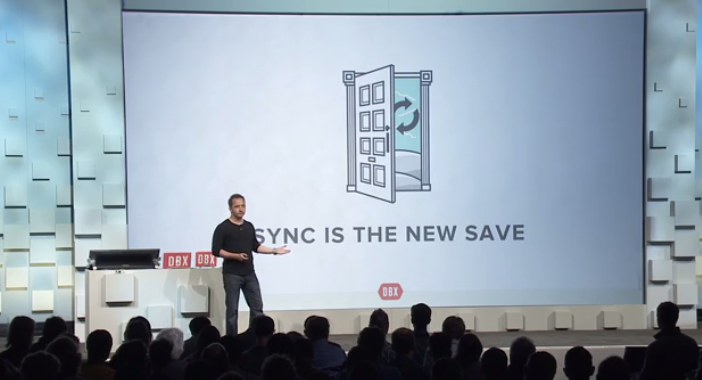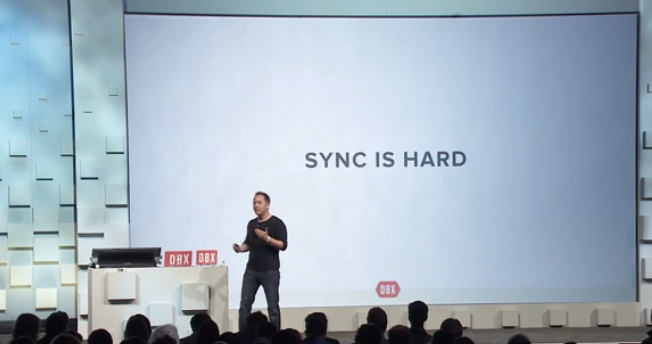Finally an Affordable Cloud-Based Storage Solution
To store data on local hard drives sitting in the vicinity of the computer has some obvious limitations. It is still nice to have one, but it does not prevent losing data from robberies or any kind of catastrophes that might happen. Besides, the quantity of personal digital data to be stored rapidly increases, to the point of making standard hard drives look rather small and insufficient.
The cloud, on the other hand, appears to be a solid alternative. Assuming a minimum quality, the data are duplicated over several distant servers, and those servers are maintained and monitored by teams of professionals working full time for them to keep running.
Dropbox, Google Drive, Microsoft OneDrive, Amazon Cloud Drive, SugarSync, etc. offer solutions that remain in the same order of magnitude in terms of cost. That is to say, several terabytes of storage remain unaffordable for ordinary people.
Recently, OVH has come up with a solution, dubbed hubiC, which simply dwarfs all the competitors (with respect to the cost)… 10 € per month for 10 TB of storage (redundant on three distant data centers). The various offers are summarized in the following table:
| Storage space | cost |
|---|---|
| 25 GB | Free |
| 100 GB | €1 incl. VAT/month |
| 10 TB | €10 incl. VAT/month |
At this point, I do not have any idea regarding the quality of service, though. I have some experience with both Google Drive and Dropbox, and I am quite happy, in this respect, with both of them.
In order to synchronize/store data with Google Drive or Dropbox, either the files can be “manually”1 uploaded through a web interface or a free client application can be installed to monitor a single specific directory on the local machine, and to synchronize it with the remote storage. HubiC follows a very similar approach, and provides its users with both a client application and a web interface. The web interface of hubiC appears not to be as sophisticated as the ones from Google Drive or Dropbox, though (e.g., the drag-and-drop function possible with certain popular browsers is currently not implemented). However, hubiC is a relatively new player, and consequently this lack of maturity is understandable.
In my view, those solutions to upload/synchronize files are rather limited and inadequate for dealing with more than several hundred of gigabytes.
Let’s consider a scenario in which the cloud-based storage has a capacity of several terabytes. My mac mini does not come with a several terabytes hard drive! Therefore even if I put all my files in the specific synchronized folder, I cannot use the entire capacity of the remote storage. I believe such storage is not merely for backup and for synchronization between machines, but is also a means of extending my total storage capacity (a sort of extension of my local disks). Otherwise, a few hundreds of gigabytes would indeed be enough. For example, I might be interested in storing some voluminous files I barely use in the cloud, without keeping local copies.
Synchronization, sync in short, sounds a wonderful concept.
Sync is the new save.
However,
Sync is hard!
And indeed, it has not always delivered on its promised benefits. In a funny manner, peppered with sarcasm, Drew Houston, during the DBX keynote, explained what to expect (so far):
(…) all my photos are gonna be gone. Right? Half of the people on my phone book disappeared, the other half ended-up there twice! (…) this is what we are trained to expect.
His point was that now Dropbox has successfully addressed this challenge.
Focusing on remote storage using a client for synchronizing, in the background, all the files present in a magic folder, first, the client application must be trusted. As just mentioned above, sync is hard. How certain can we be that after the installation of a new release some files will not be gone? Without waiting for the next release, how certain, in the first place, can we be that there is no nasty bug hiding in the current release that managed to go unnoticed through all the extensive tests, and that is just waiting for our peculiar setting to unleash its full power and proudly demonstrating its ravaging capability?
Second, how certain can we be that nobody with bad intention will ever break into our account, and remove a massive amount of data? The sync mechanism will then make sure to erase all other copies of the data… Basically, the sync folder should not be viewed as a data backup solution (i.e., even if the data are duplicated, it remains wise and judicious to backup them the old way).
So, let’s put aside the synchronized folder, and look at the alternative: the web interface to upload files. For example, with hubiC, there seem to be no way to upload a folder. You can upload multiple files at once only if they reside in the same folder.
I have thousand files organized in hundreds, possibly thousands, of folders and subfolders… and how to deal with the files updates? For instance, if thousands of text files are remotely stored in various folders, and several hundreds of them are subsequently locally updated. I might be interested in uploading those modified files to overwrite the out-of-date ones. How exactly the web interface (as it is now) can be of any relevant help here?
To conclude, I think hubiC offers a really appealing deal, but the tools that currently comes with it are too limited to harness the full potential.
Wait! This claim might not be accurate. A closer look at the service description reveals that hubiC’s backend is Openstack Swift, and hubic API provides us with the possibility to develop custom apps.
I am going to investigate further the possibilities to develop tools that fit my requirements, then…
Update: (26 Mar 2014) The first version of Swift Explorer has been released…
-
The drag-and-drop capability available with Chrome, Firefox, or Safari provides users with an effective means of uploading folders (for both, Google Drive and Dropbox). In addition, a full folder can be uploaded via the web interface of Google Drive when accessed using Chrome. ↩

